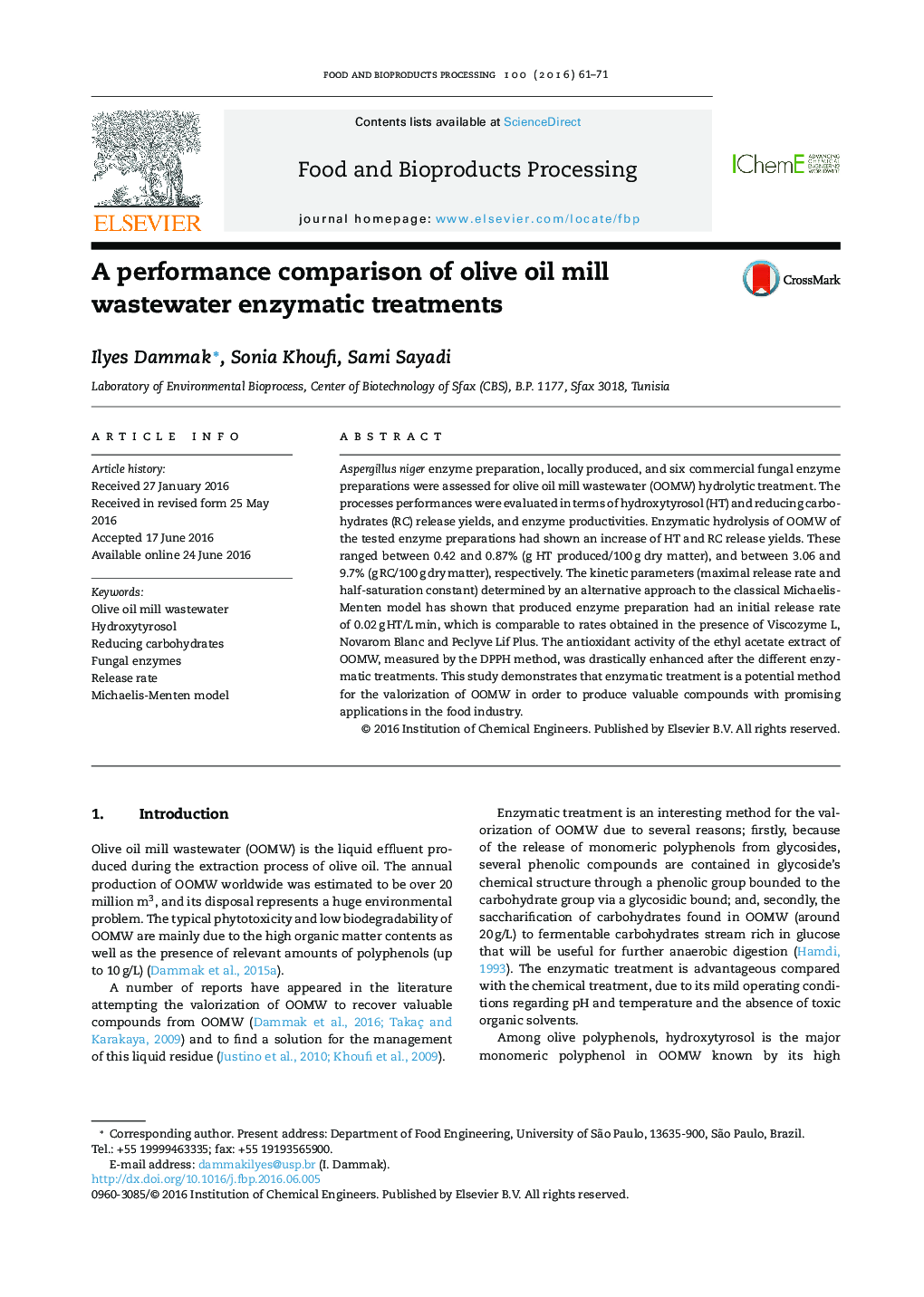| Article ID | Journal | Published Year | Pages | File Type |
|---|---|---|---|---|
| 18811 | Food and Bioproducts Processing | 2016 | 11 Pages |
•Fungal enzyme activities exert a synergetic effect to release hydroxytyrosol.•β-Glucosidase was revealed as the main enzyme affecting hydroxytyrosol release.•The release kinetic of hydroxytyrosol and reducing carbohydrate were quantified.•A satisfactory approach was developed to assess enzymatic treatment of OMW.
Aspergillus niger enzyme preparation, locally produced, and six commercial fungal enzyme preparations were assessed for olive oil mill wastewater (OOMW) hydrolytic treatment. The processes performances were evaluated in terms of hydroxytyrosol (HT) and reducing carbohydrates (RC) release yields, and enzyme productivities. Enzymatic hydrolysis of OOMW of the tested enzyme preparations had shown an increase of HT and RC release yields. These ranged between 0.42 and 0.87% (g HT produced/100 g dry matter), and between 3.06 and 9.7% (g RC/100 g dry matter), respectively. The kinetic parameters (maximal release rate and half-saturation constant) determined by an alternative approach to the classical Michaelis-Menten model has shown that produced enzyme preparation had an initial release rate of 0.02 g HT/L min, which is comparable to rates obtained in the presence of Viscozyme L, Novarom Blanc and Peclyve Lif Plus. The antioxidant activity of the ethyl acetate extract of OOMW, measured by the DPPH method, was drastically enhanced after the different enzymatic treatments. This study demonstrates that enzymatic treatment is a potential method for the valorization of OOMW in order to produce valuable compounds with promising applications in the food industry.
Graphical abstractFigure optionsDownload full-size imageDownload high-quality image (152 K)Download as PowerPoint slide
